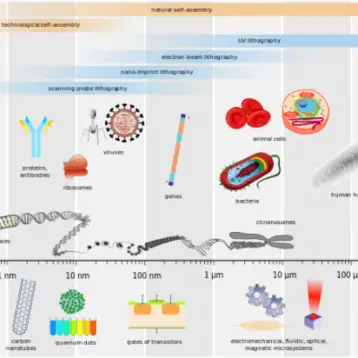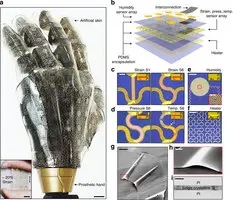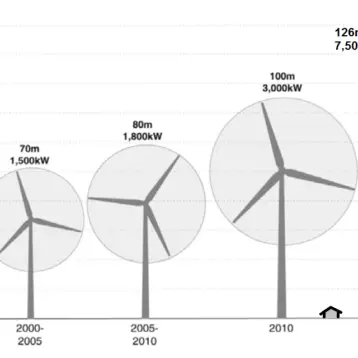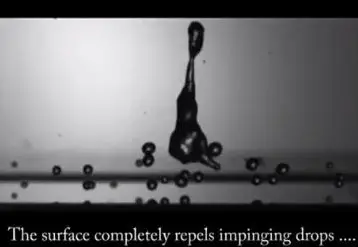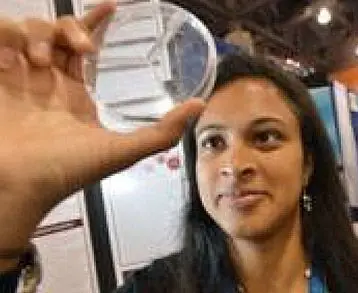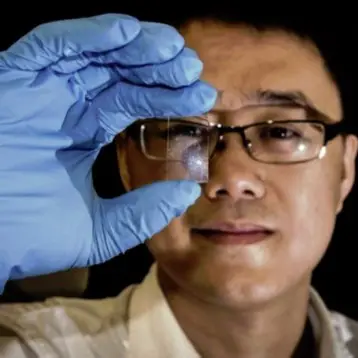|
Zettl’s team originally set out to miniaturize individual components of a radio receiver, but the integration of separate nanoscale components proved difficult, until Zettl and his students experienced a eureka moment: they realized that one nanotube can do it all. Within a matter of days, they had created a functioning nanoradio.
The nano receiver translates the electromagnetic oscillations of the radio wave into the mechanical vibrations of a nanotube. The vibrations are then converted into a stream of electrical pulses that reproduce the original radio signal, and are anchored to a metal electrode that is wired to a battery. Just beyond the nanotube’s free end is a second metal electrode. When a voltage is applied between the electrodes, electrons flow from the battery through the first electrode and the nanotube and then jump from the nanotube’s tip across the tiny gap to the second electrode. The nanotube – now negatively charged – is able to “feel” the oscillations of a passing radio wave, which has both an electrical and a magnetic component.
The team’s next goal is to allow their nanoradios to transmit signals in addition to receiving them. Professor Zettl says that it will not be difficult to achieve this goal, since a transmitter is essentially a receiver running in reverse.
|
Nano transmitters could be used for a variety of purposes, such as attaching tiny chemical sensors into the blood vessels of diabetics. The sensors would be able to relay information to a detector, or perhaps even an implanted drug reservoir that could release insulin or another therapeutic on cue. Zettl says that since his paper on the nanotube radio was published in the journal ‘Nano Letters’, he has received several calls from researchers working on radio-based drug delivery vehicles. “It’s not just fantasy,” he says. “It’s active research going on right now.”
TFOT recently covered BIOTEX – biosensors, which can be integrated into special fabrics. The sensors are capable of measuring sodium, chloride, and potassium in miniscule volumes of sweat samples on the skin. Another related device covered by TFOT is the NIKE+ sports band, which collects information during running, jumping, or any other athletic activity, and analyzes the data either in real-time or later, on the user’s PC.
To read more about Zettl’s nanotube radio, see the University of California, Berkeley website.




